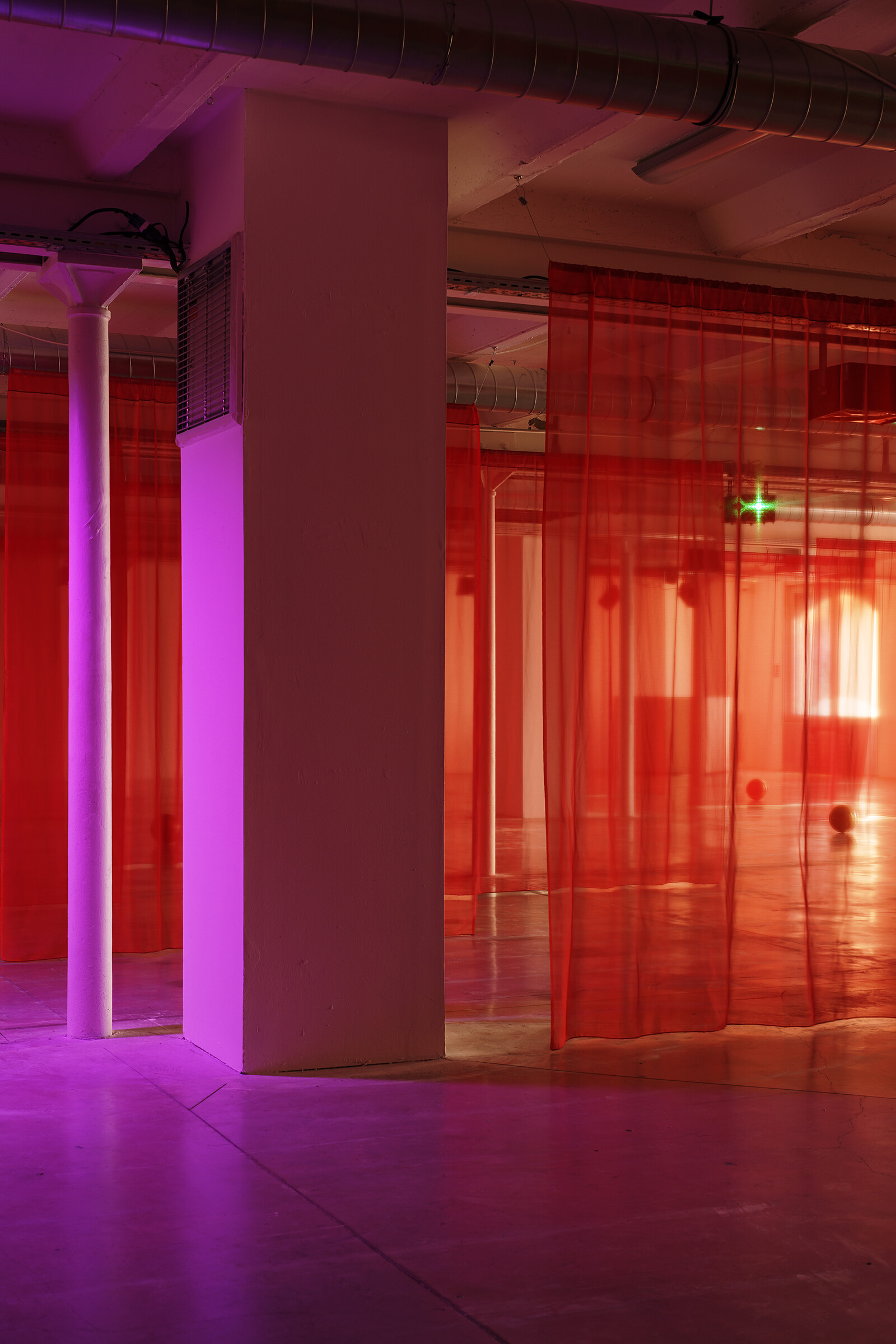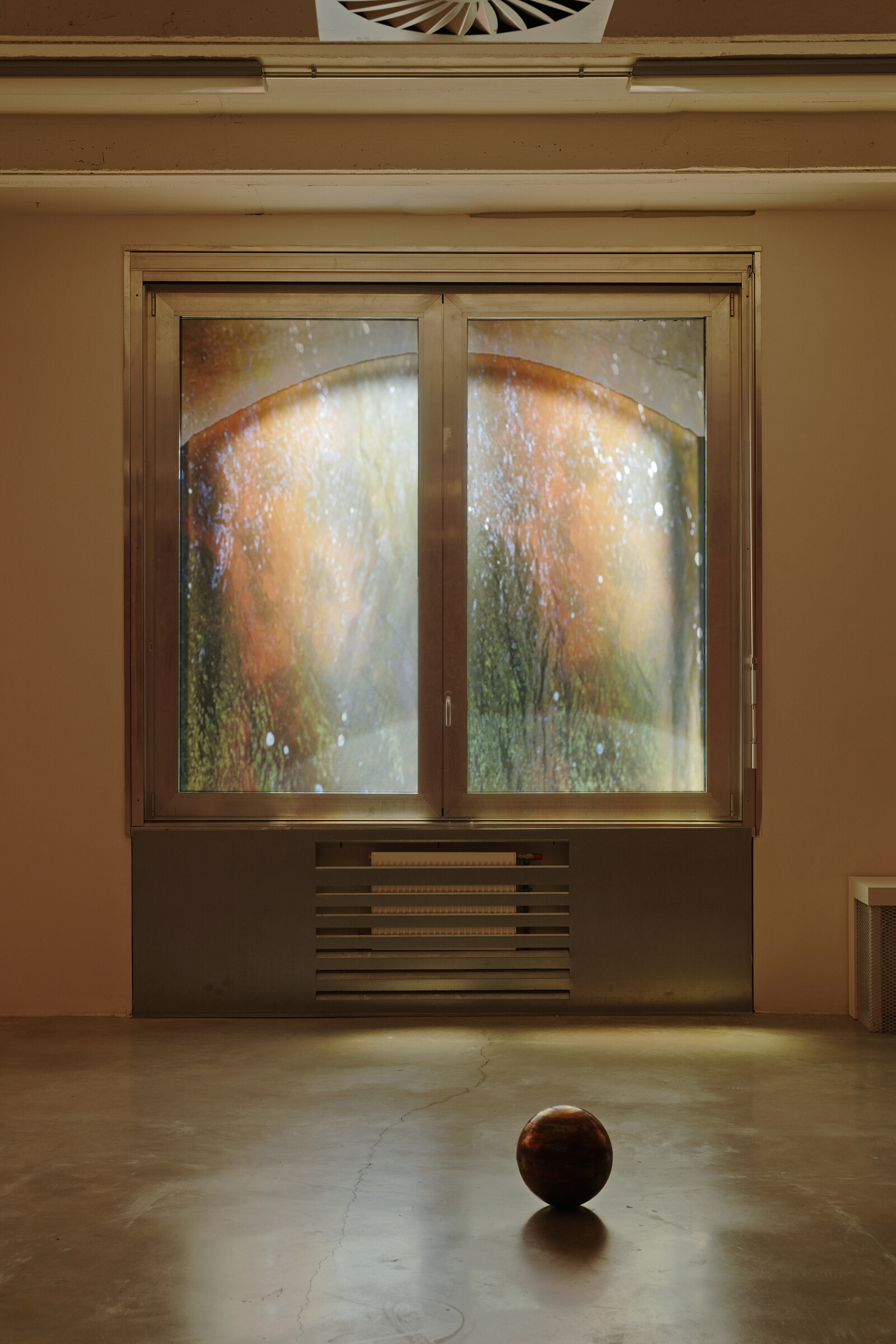In Octavia Butler’s classic sci-fi trilogy Xenogenesis (1987–89), the ooloi are a third-gender alien species of the Oankali. Notorious shape-shifters, they are the bioengineers of their kind and are able to gather genetic material from others and build that of their offspring, therefore embodying the complexity of queer kinship theories and the socio-political potential of a third subjective space. “OOLOI,” Paul Maheke’s exhibition at La Friche de la Belle de Mai, the former tobacco factory where Triangle France is located, borrows its title from Butler’s Oankali aliens.
In the space, Maheke suspended layer upon layer of diaphanous red fabric in large square panels from the ceiling of the massive open room. The fabrics undulate slightly in the wind created by fans placed on the floor along the length of the exhibition hall. Large theater spotlights click on and off abruptly, or glow slowly into force and then fade. Brass and copper spheres roughly the size of soccer balls are scattered on the floor throughout the space. Though daylight and the shadow of fabric moving are faintly reflected on the sculptures’ semi-polished surfaces, these orbs remain static, acting as anchors for everything “OOLOI” comprises but does not materialize: the unseen characters, the fragmented, invisible narratives, the psychic field of history.
Maheke uses abstraction strategically in “OOLOI.” The sheer fabric, the orbs’ minimalist geometry, and the near-absence of figuration are all marshalled to think through the possibility of a presence that has an unstable relationship to objectivity and to essentialism—like the queer person, the racialized subject, and the ghost. All beings that embody the ooloi by manifesting a past that is not past, disrupting the illusion of linear continuity in time and space.
“OOLOI” becomes denser as I move further into the hall, with thicker filters on the windows and less ambient sunlight. The distances between each layer of red gauze grow tighter. I lay down on the concrete floor to allow my body to be level with the fans so that I can watch the fabric move from a different angle and focus on what had, until I reached the back of the hall, been a vague ambient sound. This noise becomes a voice as I approach a speaker suspended from the ceiling. A male voice is re-performing a reading Maheke received in the Dominican Republic by a queer clairvoyant. The psychic sees Maheke “with big red tufts of energy coming through your ears down into the ground through your spine” and as a tree, “one of these old withered, not withered but thick-barked trees with many branches.” As I watch the colors change across the space, head propped up on an elbow now, I realize that this audio functions as a portrait of the artist as psychic substrate, a materialization of his experience of the immaterial dimension of life. It is the moment of figuration in an otherwise abstract landscape.
As a whole installation, “OOLOI” provides a space in which something of the queer black experience can be intimated—though never known—but the voice track also functions as key for how viewers might approach the work. “The sensitivity that you have to the pains of life […] I’m feeling them around your jaw, but they’re definitely starting in the heart,” the psychic says. “And I don’t know,” he goes on, “you know it’s almost a hysteria, like I don’t know what to do, I don’t know how to react to this.” I read Maheke’s installation as a response to the confusion he provokes in the psychic, which could be an allegory for the anxiety that the ooloi and other non-binary beings provoke. Maheke’s imperative is to watch the places where the world is translucent.











